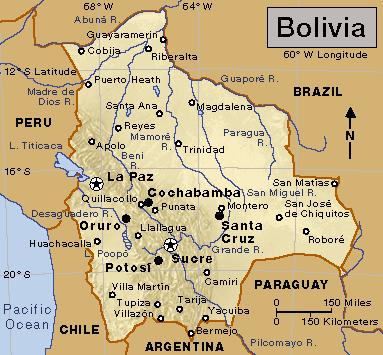Sucre, << SOO kray >> is the official capital of Bolivia. It is home to the country’s Supreme Court. However, most government offices are in La Paz, Bolivia’s actual capital. The municipality of Sucre has a population of 261,201. A municipality may include rural areas as well as the urban center. Sucre lies in south-central Bolivia in the Andes Mountains. Its altitude is about 8,900 feet (2,700 meters).

Founded in 1538, Sucre is one of the oldest cities in South America, and it preserves much of its colonial architecture and character. Most of the city’s buildings are painted white, as they were in the days of the Spanish empire. Sucre’s main square has a cathedral that was begun in the 1500’s and the Legislative Palace, in which Bolivia’s Declaration of Independence was signed in 1825. The University of St. Francis Xavier is in Sucre. Founded in 1624, it is one of the oldest universities in the Western Hemisphere. Some Bolivians view Sucre as the historical and intellectual center of modern Bolivia.
Many of Sucre’s people work on nearby farms or in factories that process farm products. Others are employed by the government or in such industries as oil refining and cement manufacturing.
Spanish settlers established Sucre on what had been an indigenous (native) Quechua city. During the Spanish colonial period, the town was known at different times as Charcas, La Plata, and Chuquisaca. It grew rapidly after the discovery in 1545 of silver mines at nearby Potosí. In 1839, it was renamed Sucre, after Bolivia’s first constitutional president, General Antonio José de Sucre. Most of the government moved from Sucre to La Paz in 1899, largely because La Paz had become Bolivia’s major economic and transportation center.
